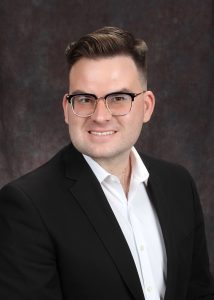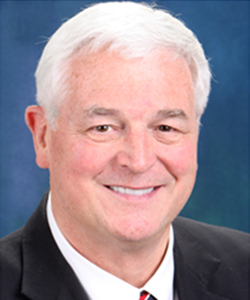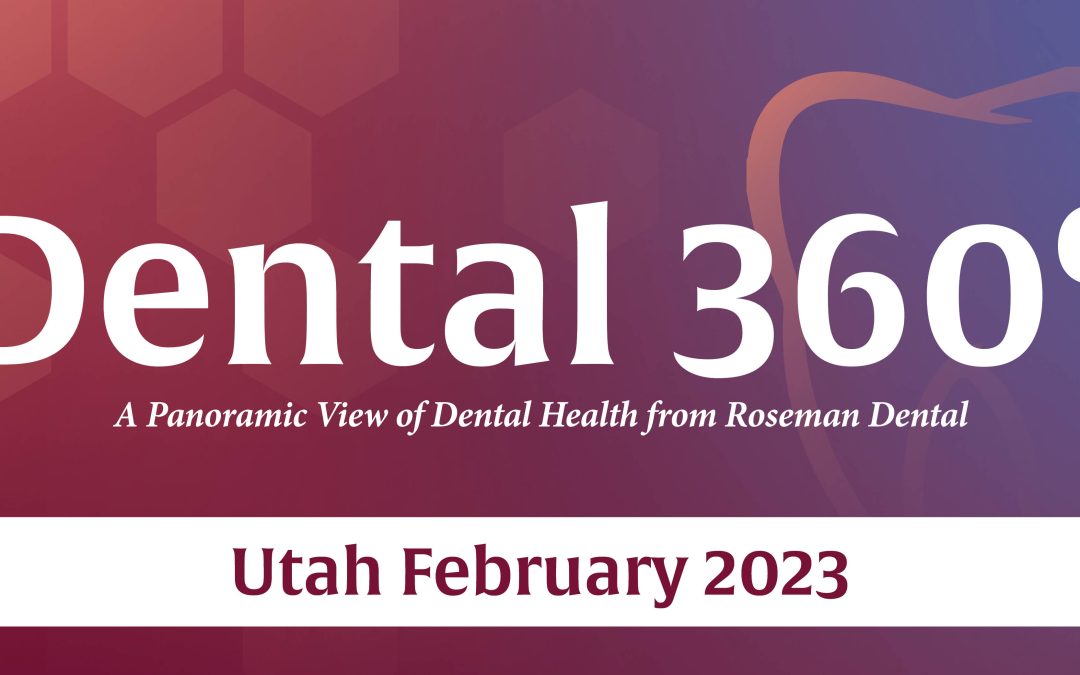
by Roseman Dental | Feb 10, 2023 | Dental 360, Dental Clinic Blog, Roseman Dental - UT
We are back from taking a break during the busy holiday season and are excited to be with you in 2023! In this February issue of Dental 360°, you’ll learn about what to expect at your child’s first dental visit. You’ll also read about National Children’s Dental Health Month as well as the impact we are having in our local community here in Utah through our Give Kids a Smile® event. We are excited to continue to share about our dental offer that started February 6 that’s making all our patients smile!
Roseman Dental’s Dental 360° is a monthly e-newsletter. Each month you’ll receive a panoramic view of dental health. Dental health is key to your overall health and here at Roseman Dental, we are dedicated to improving not only your mouth, but your whole self. At our clinic we have an excellent team of licensed dentists, dental residents and students, and dental assistants and hygienists all focused on you and your family’s oral health. We offer comprehensive care, are a one-stop shop for all your dental needs and offer dental care at a cost up to 50% lower than what you would find at a traditional dental office. Roseman Dental has been serving its community since 2011 and we look forward to continuing to serve you and your family.
We hope you find Dental 360° helpful and informative. We look forward to connecting with you each month.
Dental 360° February Articles
National Children’s Dental Health Month
First Dental Visit for Your Lil’ One: What to Expect?
Give Kids a Smile® provides estimated $462,600 in dental care to hundreds of Salt Lake City Area children
Smile, your dental offer is waiting

by Roseman Dental | Feb 10, 2023 | Dental 360, Dental Clinic Blog, Roseman Dental - NV, Roseman Dental - UT
February is National Children’s Dental Health Month (NCDHM), a month dedicated to promoting the importance of dental health in children.
According to the American Dental Association (ADA), NCDHM began as a one-day event in Cleveland, Ohio, on February 3, 1941. The ADA held the first national observance of Children’s Dental Health Day on February 8, 1949. The single day observance became a week-long event in 1955. In 1981, the program was extended to a month-long observance known today as National Children’s Dental Health Month. Since 1941, the observance has grown from a two-city event into a nationwide program. NCDHM messages reach thousands of people in communities across the country and at numerous armed services bases.
The theme for this year’s NCDHM is “Brush, Floss, Smile.” It is so important to develop good habits at an early age. Taking your children to the dentist every six months assists children in getting a good start on a lifetime of healthy teeth and gums. To get started on teaching your children good oral hygiene habits, take a look at the below “Healthy Smile Tips.” For ways to prepare for your very first dental visit with your child, click here.
- Brush your teeth 2x/day with fluoride toothpaste.
- Clean between your teeth daily.
- Eat healthy foods and limit sugary beverages.
- See your dentist at least twice a year.
Dental health in children is key to their overall health and success in school and in life. We are dedicated to helping your children learn the importance of oral health and to make it fun. In honor of this month, below you will find some activities you can do at home with your children that are focused on teaching about dental health.
Fun Activity Sheets for Children (English)
Hojas de Actividades Divertidas para Niños (Español)
Additional Activity Sheets (English/Spanish)
For more information, or for reduced-cost, compassionate dental care for the entire family, schedule an appointment by calling 801-878-1200 (UT) or 702-968-5222 (NV).
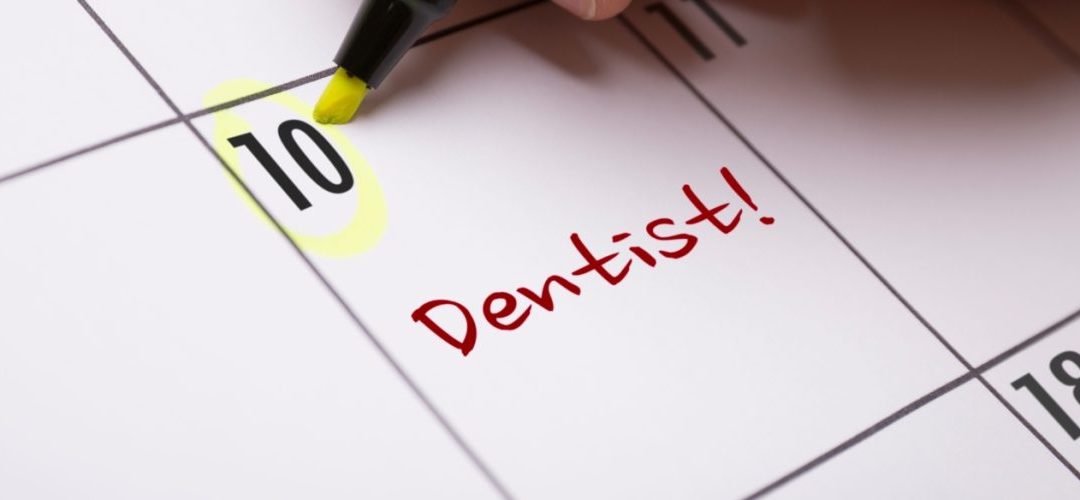
by Roseman Dental | Feb 7, 2023 | Dental 360, Dental Clinic Blog, Roseman Dental - NV, Roseman Dental - UT
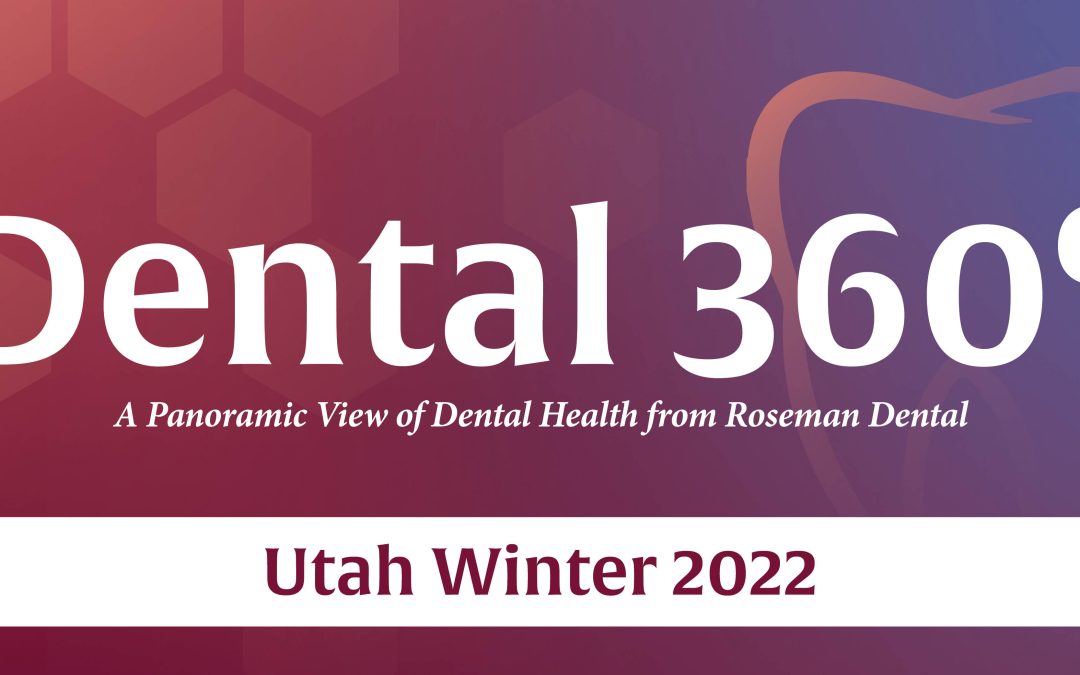
by Roseman Dental | Dec 12, 2022 | Dental 360, Dental Clinic Blog, Roseman Dental - UT
The holidays are here! In this Winter issue of Dental 360°, you’ll learn about the pros and cons of teeth whitening, find out how to tell the difference between a sinus infection and tooth pain, gain insight into the dangers of “button” batteries and mark your calendar for our annual Give Kids a Smile® event on the first Friday in February where we will be providing free dental screenings & cleanings to qualifying children ages 18 and under.
Roseman Dental’s Dental 360° is a monthly e-newsletter. Each month you’ll receive a panoramic view of dental health. Dental health is key to your overall health and here at Roseman Dental, we are dedicated to improving not only your mouth, but your whole self. At our clinic we have an excellent team of licensed dentists, dental residents and students, and dental assistants and hygienists all focused on you and your family’s oral health. We offer comprehensive care, are a one-stop shop for all your dental needs and offer dental care at a cost up to 50% lower than what you would find at a traditional dental office. Roseman Dental has been serving its community since 2011 and we look forward to continuing to serve you and your family.
We hope you find Dental 360° helpful and informative. We look forward to connecting with you each month.
Dental 360° Winter Articles
Teeth Whitening: The Pros & Cons
Can A Sinus Infection Lead to Tooth Pain?
The Dangers of “Button” Batteries
2023 Give Kids a Smile® Presented by Marathon Petroleum Corporation – Free Dental Screenings & Cleanings for Children 18 & Under
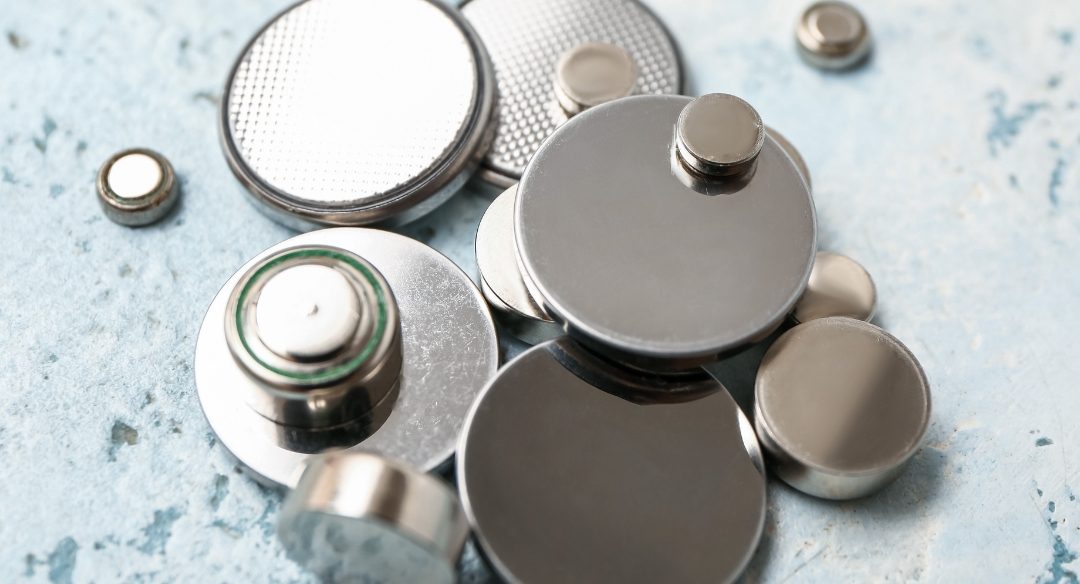
by Roseman Dental | Dec 7, 2022 | Dental 360, Dental Clinic Blog, Roseman Dental - NV, Roseman Dental - UT
The Costco Connection Magazine ran an article a few years back about keeping button-sized batteries out of reach for children and toddlers. While in residency, my husband Matthew cared for a one-year-old girl who accidentally swallowed a small battery. With all the saliva and mucous in the digestive system, electricity was conducted through the battery and the soft lining of her esophagus was burned. Over the following year, the toddler had to be put under general anesthesia three times to have her esophagus surgically repaired. Her surgeon believed that more operations would probably have to be planned in the future and the poor child would never have a completely normal digestive system again. This haunting case remained close to his heart for years.
With the holiday season here, it’s important to understand the dangers of batteries for small children. We all know they like to put everything in their mouths, especially if it’s small. In a technology focused world, a lot of electronic toys and devices require these small, but powerful lithium batteries including musical holidays cards which I am sure all of us will be receiving this month. If your child were to swallow one of these, it is imperative to go to the ER right away to get it removed. Even if it’s a dead battery, damage can still occur in as little as two hours.
Here is the article from Costco Connection Magazine:
“Keep Out of the Mouths of Babes” by David Wight
Small “button” batteries, found in countless home and personal electronic devices, represent a huge danger to children. Since 1985, more than 3,500 injuries and at least 17 deaths have been attributed to children swallowing button batteries, according to Energizer, a battery industry leader and a partner with Safe Kids USA in a child-safety advocacy group devoted to raising awareness of this threat.
Many homes have older devices not equipped with the more current safety approaches being used by manufacturers. Calculators remote control devices, cameras, penlights, hearing aids, cellphones, and watches are just a few of the devices that use button batteries, which can also be found in musical greeting cards.
Choking is not the danger. The big risk is the power emitted by these tiny but powerful lithium batteries. When combined with saliva or other body fluids, the result can be a serious burn. The battery doesn’t have to leaking for that to happen, and even a weak or dead battery will have enough of charge left to do damage.
Immediate action is required if you suspect a child has swallowed a button battery. It takes as little as two hours for a hole to be burned in or through a child’s esophagus, trachea, stomach or nasal-septum, leading to serious illness or even death.
If you think your child has swallowed a button battery or has placed one in his or her nose, seek medical attention immediately. Button batteries are visible on an x-ray. If one is detected in the esophagus, trachea, ear or nose, it must be removed as soon as possible to prevent serious injury.
Tips for a battery-safe home
- Keep spare or dead batteries as inaccessible to children as medications or products containing poison.
- Never let children play with batteries.
- If you have devices that use button batteries, make sure to secure the battery compartment from your child’s prying fingers. Extra layers of tape over the battery compartment door may prove effective.
Author: Dr. Alice Chen, DMD

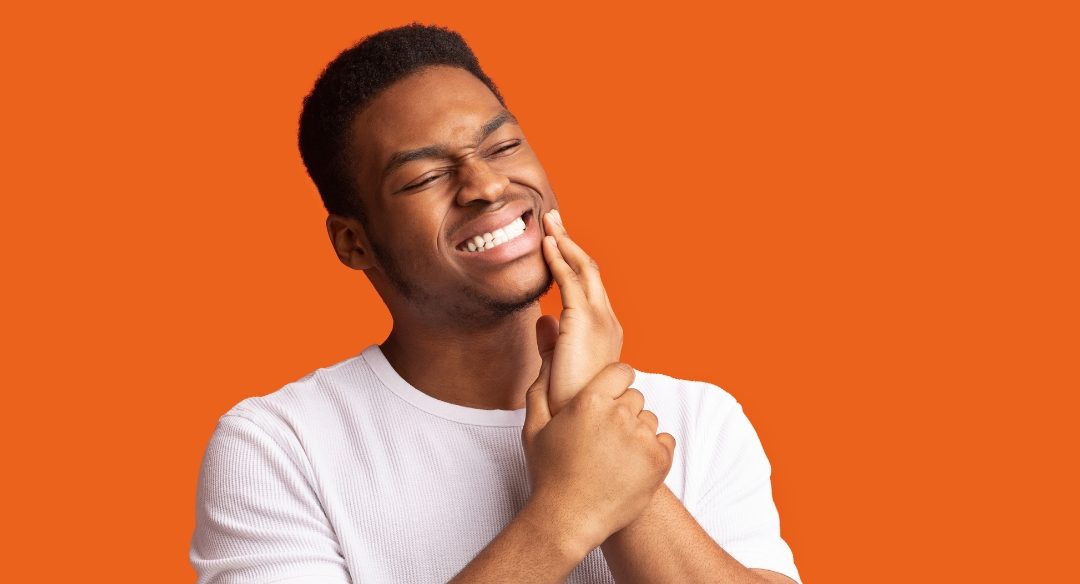
by Roseman Dental | Dec 6, 2022 | Dental 360, Dental Clinic Blog, Roseman Dental - NV, Roseman Dental - UT
The short answer is yes but distinguishing between the two can be tricky. Your dentist will be able to perform certain tests and take certain x-rays to determine if it is indeed a tooth causing your pain or a sinus problem mimicking tooth pain.
What are sinuses? Sinuses are interconnected spaces in the skull that all lead to the nasal passageways. Their job is to filter, moisten, and warm the air that you breath in. The largest sinuses in your head are a pair of sinuses called the Maxillary Sinuses. They are located just above your upper back teeth. In fact, the roots of the upper molars can often extend into the maxillary sinuses.
This means that whenever the sinuses are inflamed from infection (sinusitis/sinus infection) or seasonal allergies for example, the roots of the upper back teeth can be affected, resulting in tooth pain.
The opposite can be true as well. In the event that you have an infected upper molar, you can even develop a sinus infection that originates from the tooth. This further emphasizes the ambiguous relationship between the teeth and sinuses.
Although it is difficult to differentiate between tooth and sinus pain, there are some unique signs that point towards an issue in the sinuses:
- Sinus pain typically affects the upper molars. If your toothache is coming from a bottom tooth, then the sinuses are an unlikely cause.
- Usually more than 1 tooth on that side hurts and it can’t be narrowed down to a single tooth. Pain originating from a tooth is usually more intense and specific to 1 tooth.
- Sinus pain is often worse when you bend over, jump/stomp your feet, and lie down. Tooth pain on the other hand, is usually not affected by positional changes.
- Pressure around your cheek, eye, forehead, and nose.
- Mucous discharge that is thick and discolored. Nasal drip with a bad taste.
- Pain and a feeling of “fullness” in the ears.
- Altered sense of taste and smell.
- Runny or blocked nose.
If you have pain in your teeth, it is very important that you see your dentist as soon as possible for evaluation. Your dentist will be able to determine if the pain you are feeling is really from the teeth (cavities, gum disease, etc.) or from something else. If your dentist rules out teeth as the cause of pain, he/she may refer you to a physician for further evaluation.
If you can’t make it to your dentist and/or physician right away, these home therapies may provide some relief for tooth pain caused by sinus inflammation and pressure:
- Use saline to flush sinuses (Nasal Lavage).
- Drink a lot of water. Adequate hydration thins out mucous and allows for better drainage of the sinuses.
- Use air humidifier and make sure your head is tilted on your pillow when you sleep.
- Over-the-Counter Decongestants/Expectorants (i.e., Pseudoephedrine)
- Eat spicy food (if you can tolerate it).
- Your dentist or physician may prescribe you additional medications such as antibiotics, stronger decongestants, allergy medication, pain relievers, nasal steroid spray, etc.
If you have questions, if you are experiencing dental pain, or if you are overdue for a dental check-up, please schedule an appointment today!
Roseman Dental & Orthodontics (Henderson, NV)
Roseman Dental (South Jordan, UT)
Author: Dr.Matthew Thacker, DMD, BS
